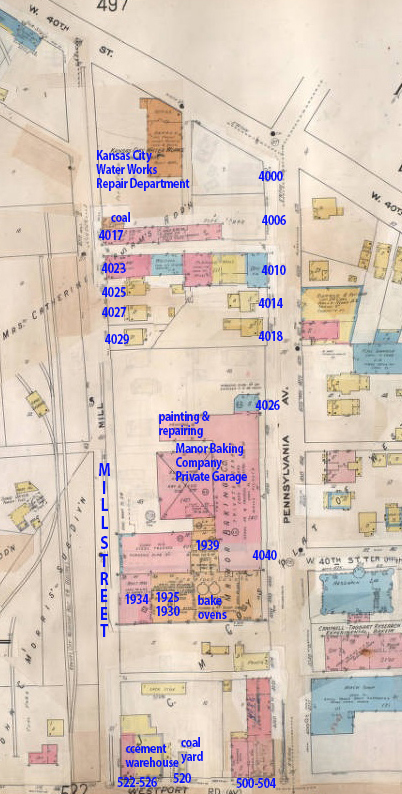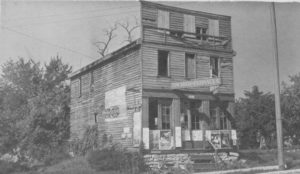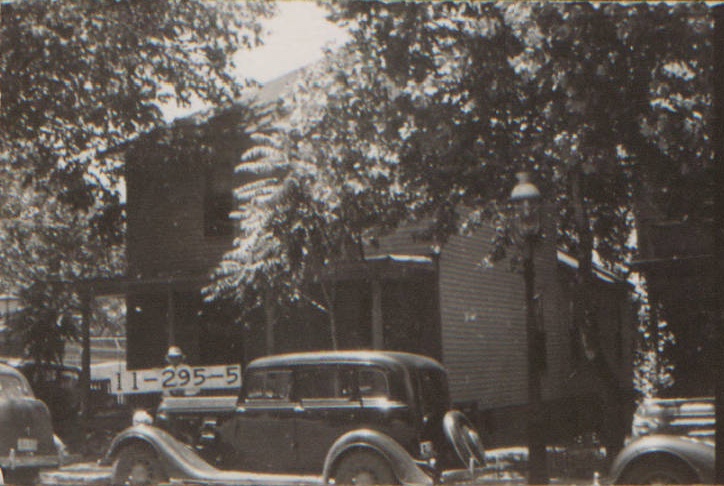
As part of our Uncovering History Project, the Midtown KC Post is examining each block in Midtown. A set of 1940 tax assessment photos is available for many blocks.
As one of the oldest parts of Kansas City, the block of Westport from Pennsylvania to Mill between 40th and Westport Road has seen several distinct stages of development. The area first came to life in the mid-1800s, when historic churches, courtrooms, wagon-making, and grocery shops mingled with small frame homes. Despite efforts to preserve some of those historic buildings in the 1930s, most were replaced by larger, more commercial establishments and parking lots. Today, the block still serves the entire Kansas City community as part of the Westport entertainment district, where some of Kansas City’s most historic buildings are tucked into a turn-of-the-twentieth-century streetscape.

This is a recent aerial view of the block, which includes Manor Square, the Char Bar, and the Westport Coffeehouse.
Today, a look at the west side of Pennsylvania Avenue from 40th to Westport Road. Next week, we’ll look at the rest of the block.
.

Pennsylvania Avenue: From Frontier Shops to “Modern Establishments”

An early 20th century map of the block.
At the northeast corner of Pennsylvania and 40th stood the First Presbyterian Church, considered by Kansas Citians in the 1930s one of the three most important edifaces in Kansas City. By then, however, the church was occupied by a chemical company and it was torn down in 1938 to make room for “modern improvements.”
A little further down Pennsylvania, at 4010, the first mayor of Westport, Thomas J. Goforth, lived, practiced law, and held municipal court in his home, which he built around 1849.
South of Goforth’s home were several frame houses no longer in existence. One of them was occupied by German-born wagon maker Earnest Bieber, who moved to Westport in 1846. Another important frontier business on the block was the cabinet shop and furniture store run by Henry Sager.
By 1926, the Manor Bread Company, which delivered its freshly baked products by horse and wagon, had settled into a three-story building at 4050 Pennsylvania.





The Changes in 1940 Photos
By 1940, this stretch of Pennsylvania was looking a little tired, with its frame homes showing their years.







Historic photos courtesy Kansas City Public Library/Missouri Valley Special Collections.
Pingback: Black, white families, church, businesses shared Westport block in early 1900s | Midtown KC Post
Pingback: Black, white families, church, businesses shared Westport block in early 1900s at Midtown KC Post
Pingback: Black, white families, church, businesses shared Westport block in early 1900s - Midtown KC Post